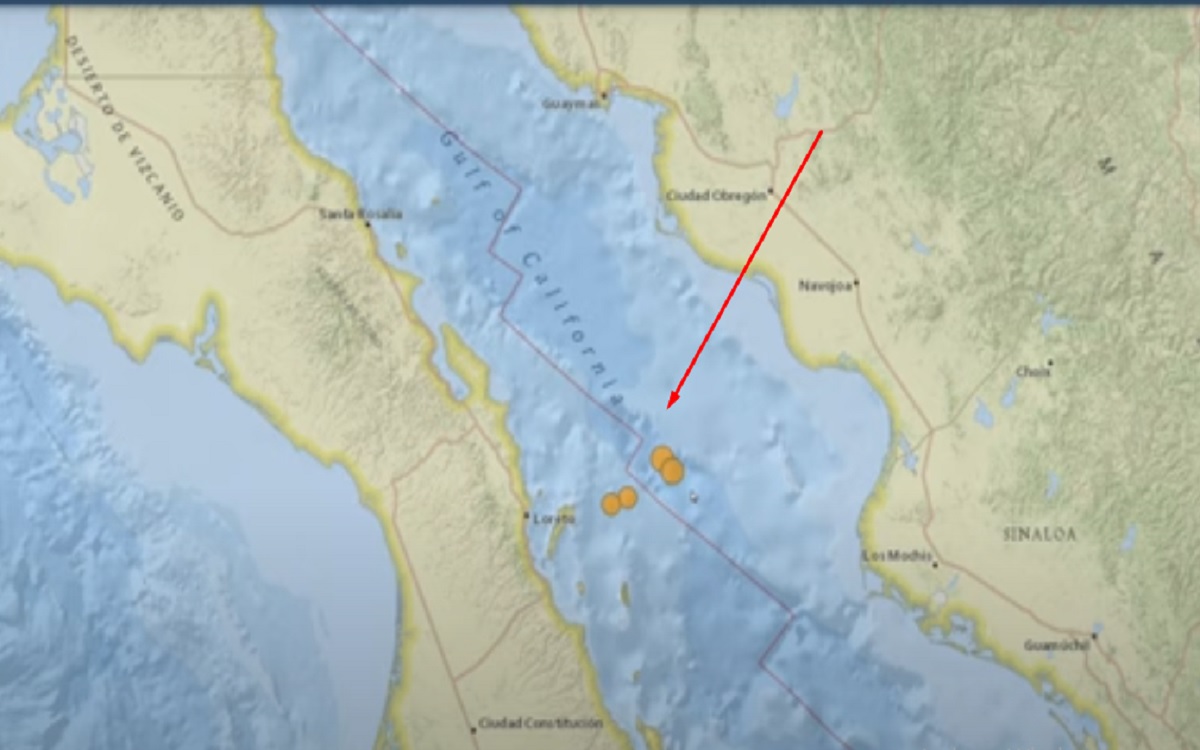|
Getting your Trinity Audio player ready...
|
A swarm of earthquakes, ranging from moderate to powerful, has been rattling the Gulf of California region over the past few days, sparking concerns among seismologists and residents alike. Meanwhile, solar observers are closely monitoring an active sunspot region that could potentially unleash a potent X-class solar flare, threatening to disrupt vital communication systems and power grids.
The Seismic Upheaval
According to the United States Geological Survey (USGS), the Gulf of California has been experiencing a veritable storm of seismic activity since Tuesday, with over 20 earthquakes of magnitude 4.0 or greater recorded in the region.
The strongest of these tremors, a magnitude 6.3 earthquake, struck on Thursday morning, approximately 60 miles (100 km) east of the Gulf coast town of Los Mochis, Sinaloa.
This level of seismic activity is highly unusual for the region,
remarked Dr. Lucy Jones, a renowned seismologist at the California Institute of Technology.
While the Gulf of California is no stranger to earthquakes, a swarm of this magnitude and frequency is cause for concern.
Residents in several coastal towns reported feeling the stronger quakes, with some reporting minor damage to structures. Fortunately, no significant injuries or casualties have been reported thus far.
The Solar Threat
Compounding the seismic unrest, solar observers have identified an active sunspot region, dubbed AR3088, which has been steadily growing in size and complexity over the past few days. This region has already produced several potent M-class flares, and scientists warn that an X-class flare could be imminent.
X-class flares are the most powerful type of solar flares, capable of causing widespread disruptions to satellite communications, GPS systems, and even power grids on Earth. The last time an X-class flare of such magnitude struck Earth was in September 2017, causing radio blackouts and power grid failures in several regions.
We are closely monitoring AR3088,
stated Dr. Alex Young, Associate Director for Science at NASA’s Heliophysics Science Division.
If an X-class flare does occur, we could see significant impacts on our technology infrastructure.
Preparedness Measures
In response to these dual threats, civil defense authorities in Mexico and the United States have issued advisories, urging residents in the affected regions to take necessary precautions.
For the seismic activity, residents have been advised to prepare emergency kits, familiarize themselves with evacuation routes, and follow official instructions in the event of a major earthquake.
Regarding the potential solar flare, power companies and communication providers have been instructed to implement contingency plans and safeguard their systems against potential disruptions.
As the situation continues to unfold, scientists and emergency responders remain vigilant, working tirelessly to ensure the safety of those in harm’s way.
For More News Update Visit California News



